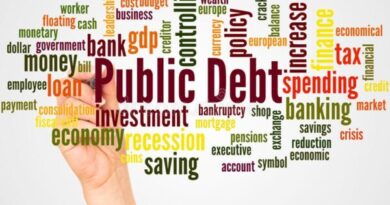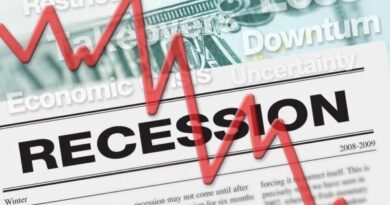World Economic Outlook: Key Insights and Emerging Trends
As we venture deeper into 2024, the world economic outlook is increasingly intriguing and multifaceted. Understanding the current state of the global economy, along with the forces shaping its future, is essential for businesses, policymakers, and individuals alike. This blog delves into the latest developments, critical drivers of economic growth, and the challenges that lie ahead.
Snapshot of the Global Economy:
The global economy in 2024 reveals a tapestry of recovery and ongoing uncertainty. The economic fallout from the COVID-19 pandemic has led to uneven recovery trajectories:
- Advanced Economies: Countries such as the United States and those in the Eurozone have exhibited strong growth, bolstered by proactive fiscal and monetary measures. However, inflation remains a significant issue, fueled by supply chain disruptions and heightened consumer demand.
- Emerging Markets: The economic experiences of emerging markets are diverse. While nations like China and India are leading the charge in recovery, other regions, including parts of Latin America and Africa, are grappling with the lingering impacts of the pandemic and other systemic challenges.
Major Drivers of Global Economic Growth:
- Technological Advancements: The pace of technological innovation is a powerful driver of economic expansion. Breakthroughs in artificial intelligence, renewable energy, and biotechnology are not only revolutionizing industries but also creating new economic opportunities. Countries prioritizing these sectors are likely to see considerable benefits.
- Global Trade Dynamics: Trade continues to play a crucial role in global economic health. Recent de-escalations in trade tensions, particularly between major economies like the U.S. and China, have contributed to a more stable trade environment. Nonetheless, ongoing protectionist policies and supply chain disruptions present risks that need addressing.
- Green Transition: The transition to a greener economy is gaining momentum. Investments in sustainable infrastructure, renewable energy sources, and green technologies are tackling environmental issues while opening up new economic avenues. This green transition is expected to be a key growth area moving forward.
- Digital Economy Expansion: The digital transformation, accelerated by the pandemic, remains a significant force in reshaping global commerce. E-commerce, remote work, and digital services are becoming more integral to economic activities, enhancing productivity and spawning innovative business models.

Emerging Challenges and Risks:
- Inflationary Pressures: Persistent inflation continues to challenge economic stability. Central banks are navigating the delicate balance between curbing inflation and fostering growth. High inflation could prompt more restrictive monetary policies, potentially hampering recovery efforts.
- Geopolitical Tensions: Geopolitical uncertainties, such as conflicts and trade disputes, pose risks to economic stability. The situation in Ukraine, ongoing tensions in the South China Sea, and other regional conflicts demand careful attention due to their potential global economic impacts.
- Debt Levels: Elevated levels of public and private debt, intensified by pandemic-related spending, are a concern. Balancing debt management with economic growth initiatives remains a complex task for many countries.
- Climate Change Impacts: The economic ramifications of climate change are becoming increasingly evident. Extreme weather events, resource scarcity, and the costs associated with mitigation and adaptation are critical challenges that require global cooperation and innovative solutions.
Charting the Path Forward:
The world economic outlook for 2024 presents a blend of challenges and opportunities. To foster sustained growth, countries should focus on several key areas:
- Fostering Innovation: Supporting technological and green innovations will be crucial for long-term growth. Policies encouraging research and development, alongside the adoption of cutting-edge technologies, are vital.
- Strengthening Trade Relations: Promoting fair and open trade while addressing supply chain vulnerabilities can help stabilize the global economy.
- Maintaining Fiscal Responsibility: Balancing fiscal policies to manage debt while investing in growth-promoting areas is essential for economic stability.
- Advancing Climate Action: Implementing effective climate policies and investing in sustainable practices will mitigate environmental risks and unlock new economic opportunities.
Conclusion:
The world economic outlook for 2024 is characterized by a cautious optimism. Despite the challenges, the potential for growth driven by technological advancements, digital evolution, and green initiatives is promising. By addressing these complexities with thoughtful strategies and investments, the global economy can pave the way for a more resilient and prosperous future.
FAQs:
1. What are the main influences on the global economy in 2024?
The global economy in 2024 is shaped by several pivotal factors, including rapid technological advancements, the shift towards sustainable energy, evolving trade patterns, and the rise of digital economies. Concurrently, issues like inflation, geopolitical instability, high debt levels, and climate change are also critical in determining economic trajectories.
2. How are technological advancements impacting economic growth worldwide?
Technological advancements are revolutionizing economic growth by driving innovations in fields such as artificial intelligence, renewable energy, and biotechnology. These developments are creating new sectors, enhancing efficiency, and fostering novel business models, particularly in nations that are investing in cutting-edge technologies.
3. What specific challenges are emerging economies facing right now?
Emerging economies are dealing with a range of challenges, including underdeveloped healthcare systems, financial constraints, and the lingering effects of the pandemic. While some regions, particularly in Asia, are making notable progress, others in Latin America and Africa are struggling to achieve economic stability and growth.
4. In what ways is the green economy transition affecting global economic prospects?
The transition to a green economy is positively impacting global economic prospects by stimulating investment in sustainable infrastructure and renewable technologies. This shift is not only addressing environmental issues but also generating new economic opportunities and driving long-term growth.
5. What is the role of international trade in shaping the current economic outlook?
International trade plays a crucial role in the current economic outlook by facilitating economic stability and growth. Improved trade relations between major economies have contributed to a more stable environment, though ongoing protectionist policies and supply chain disruptions still pose risks.
6. What risks are associated with high public and private debt levels?
High levels of public and private debt present risks such as reduced fiscal flexibility and increased susceptibility to economic shocks. Managing these debt levels while fostering economic growth requires careful and strategic policy measures to balance stability and development.
7. How is climate change influencing the global economic landscape?
Climate change is having a significant impact on the global economy through increased frequency of extreme weather events, resource scarcity, and the costs associated with both mitigation and adaptation efforts. Addressing these issues requires comprehensive global cooperation and investment in sustainable solutions.
8. What strategies can nations implement to promote economic resilience and growth?
To promote economic resilience and growth, nations should focus on investing in technological and green innovations, maintaining balanced fiscal policies, and fostering open and fair trade relations. Additionally, implementing effective climate policies and embracing sustainability will be crucial for long-term stability.
9. How can businesses adapt to the evolving economic environment?
Businesses can adapt by embracing digital transformation, investing in emerging technologies, and staying agile in response to economic changes. Diversifying supply chains, adopting sustainable practices, and remaining informed about global economic trends will also be key to navigating the shifting landscape.
10. What steps can individuals take to prepare for economic uncertainties?
Individuals can prepare for economic uncertainties by staying informed about economic trends, managing their finances wisely, and investing in skills development to stay competitive. Building a financial cushion and being adaptable to changing economic conditions will enhance personal security and resilience.




